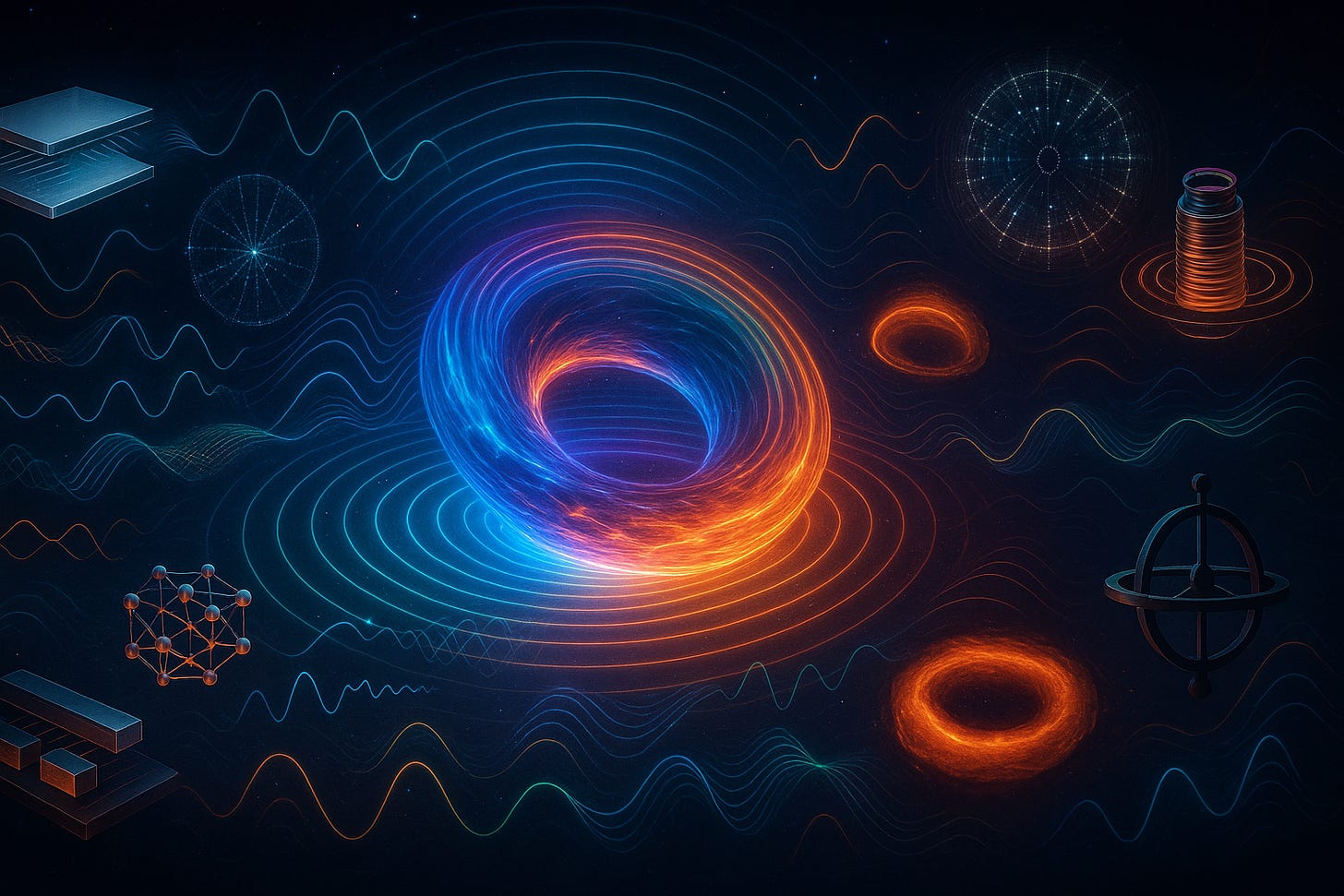Unified by Frequency: The Forgotten Scientists Who Already Cracked the Theory of Everything
Discover how magnet motors, cold fusion, zero-point energy, plasma rings, and quantum waves all reveal a hidden reality: the universe is built from frequencies...and the key was always resonance.
Integrating Key Scientific Figures and Concepts into a Unified Frequency Wave Theory
(EASY VERSION @ BOTTOM)
Introduction: A Universe of Waves and Frequencies
Modern physics has revealed that many disparate phenomena – from light and magnetism to quantum particles and even the fabric of spacetime – can be understood as manifestations of waves or oscillatio…
Keep reading with a 7-day free trial
Subscribe to Drew Ponder | Frequency Wave Theory to keep reading this post and get 7 days of free access to the full post archives.


